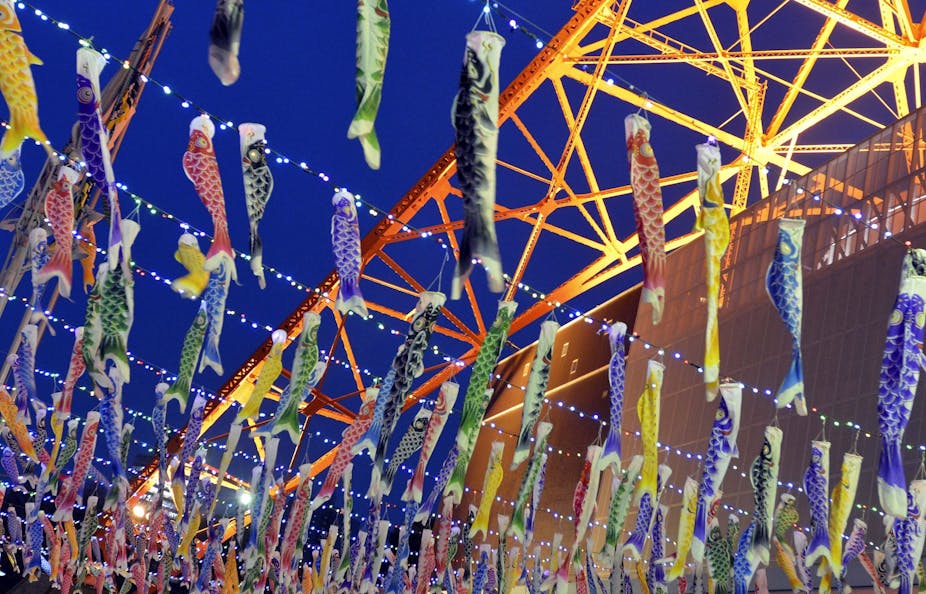In a highly symbolic move, the World Tourism Summit this week opened in Sendai, Japan, the area most affected by last March’s tsunami and Fukushima nuclear power plant meltdown.
Hosting the Summit, which continues in Tokyo, is particularly important to Japan this year - recovery of the tourism industry from last March’s earthquake and tsunami has become a national mission.
The disaster saw the total number of international tourism arrivals in 2011 drop by 28% to 6.2 million - compared to 8.6 million tourism arrivals the previous year - and also had a significant short term affect on domestic tourism.
Much of this was driven by fear of widespread radiation, sensationalised and distorted to apocalyptic proportions in some sections of the media and the blogosphere.
The situation was not helped by the mixed messages about the damage to the Fukushima nuclear power plant by both the Tokyo Electric Power Company (TEPCO) and the Japanese government caused severe reputational damage.
In early March, I was invited to be the keynote speaker at a Tourism Crisis Management Conference in Naha, the Okinawa capital, an important precursor to the current Summit.
In this region, restoring the tourism industry has been taken extremely seriously.
Okinawa is Japan’s most southerly prefecture, located some 1,500 km south of Tokyo, encompassing over 160 islands straddling the southern extremity of the Japanese island chain (50 of which are inhabited).
Okinawa attracts six million domestic tourists annually and 300,000 international visitors. Primary attractions include its distinctive culture, history, food, and sub tropical climate, magnificent beaches and stunning scenery (Okinawa and Hawaii are located on the same latitude).
The conference was attended by more than 130 government officials and tourism industry leaders from all over the Prefecture and covered by local media coverage including three TV channels and journalists from more than a dozen newspapers, radio stations and internet sites.
Media coverage of my own impressions of Okinawa (as a foreign tourism crisis management “expert”) and the measures it was taking to address natural disasters featured heavily in the local media throughout every day of my visit.
Local officials have stressed that restoring tourism and convincing both Japanese and foreign visitors that their visit to Okinawa would be safe is their paramount priority - crisis readiness among the tourism industry leadership has become a fervent article of faith.
Certainly, Okinawa’s tourism industry means business, with resort operators claiming the region’s natural disasters preparedness is among the best in the world.
Every hotel room carries a colourful manual printed in Japanese, Chinese, English and Korean warning guests of potential threats to safety - including earthquakes, typhoons or tsunamis - and measures they need to take.
Many of the newer hotels and resorts in Okinawa have their accommodation built on high ground with dramatic ocean views.
Top-end resorts such as Exes and Kariyishi have developed alarm systems and evacuation procedures to aid evacuation and shelter guests, while all hotel staff are regularly drilled on these procedures.
But the perception that all of Japan is radioactive has been a major turn-off for tourists.
Locals argue that harmful radioactivity was confined to a radius of 25 kilometres from the damaged Fukushima nuclear power plant. Okinawa is a two and half hour flight south from Tokyo (the distance between Brisbane and Adelaide).
While locals and most Japanese accept the fact that Fukushima’s radioactivity is no threat to Okinawa and in fact most of Japan, the global perception of a radioactive Japan has been far harder to shake.
The challenge for Okinawa tourism - and Japan more generally - will be effectively communicating the very clear distinction between perception and fact to prospective tourists, especially non-Japanese.
Japan has a long history of earthquakes and tsunamis. Within the tourism industry and the wider government level it has implemented some of the strictest safety regulations and building codes in the world. Japan has long practised a serious commitment to public safety.
Yet the scale and intensity of the 2011 earthquake and tsunami exceeded all the worst case analysis preventative measures.
But in planning for the future, it is clear Japan has taken on board the maxim coined by Sandy Holway, organiser of the Sydney Olympics and a respected Australian crisis management consultant of “building back better” in its post-tsunami recovery plans for the tourism industry and tourism infrastructure.

